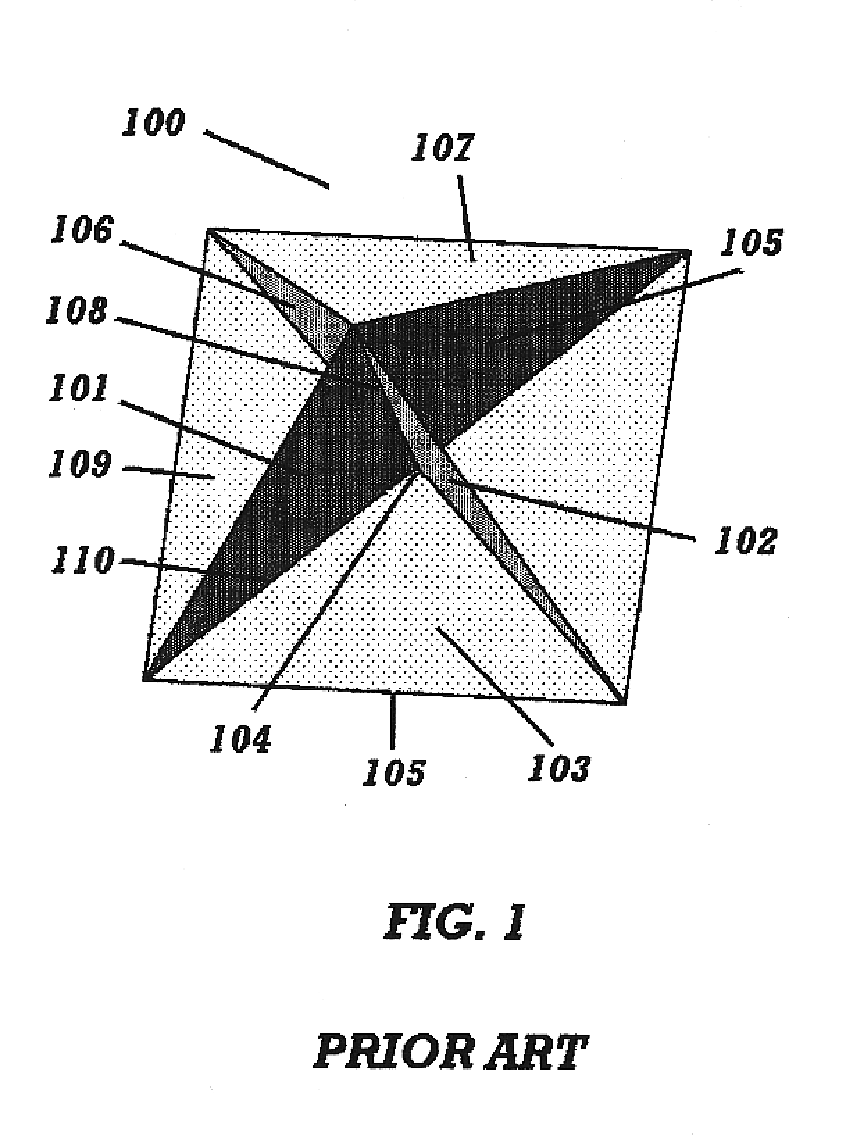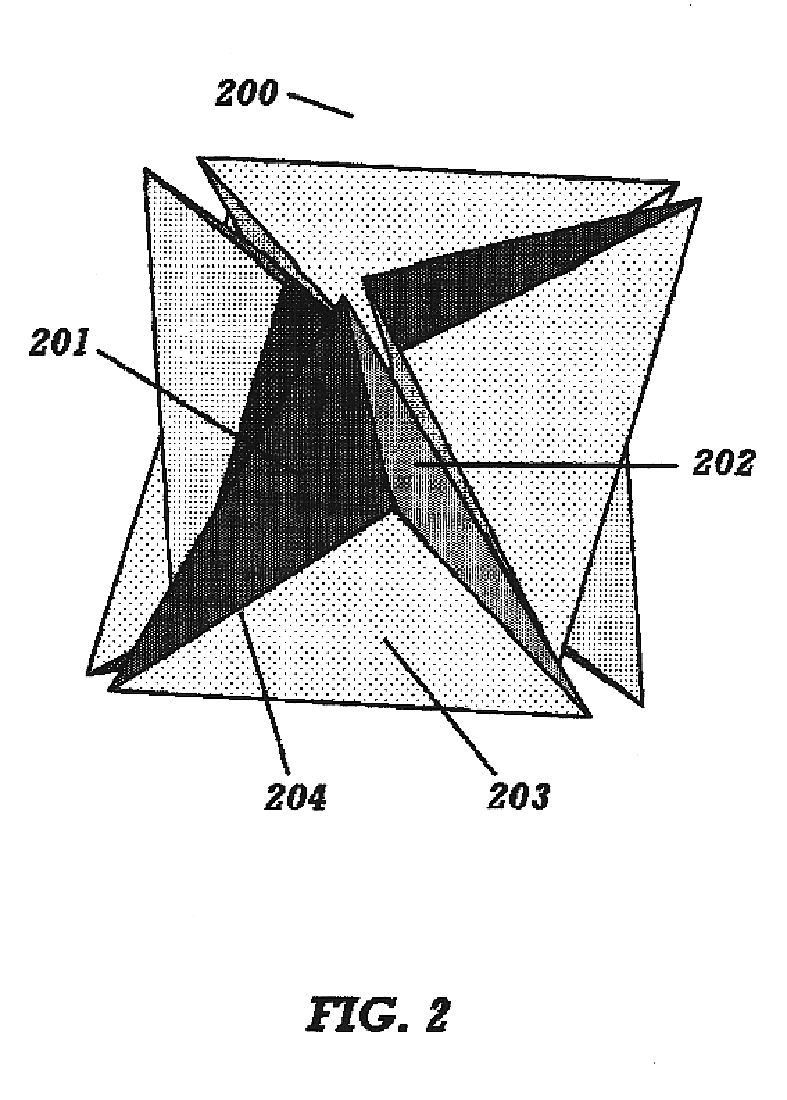Arrangement of corner reflectors for a nearly omnidirectional return
a technology of corner reflectors and omnidirectional return, which is applied in the direction of optics, instruments, and antennas, can solve the problems of cost and weight limitation, unsuitability of luneberg lenses for many applications, and general limitation, and achieves significant limitation
- Summary
- Abstract
- Description
- Claims
- Application Information
AI Technical Summary
Problems solved by technology
Method used
Image
Examples
Embodiment Construction
FIG. 7 shows the radar cross section in the retro direction for four different arrangements of corners (FIGS. 6 through 9 all show the results of approximate numerical computations). The corners used for FIG. 7 all have sides formed from a ninety degree section of a circle. Two edges of each side are straight and are five wavelengths long. The third edge is a circular arc of radius five wavelengths. The curve 701 gives the radar cross section for the standard array of such corners in the hold water orientation.
The radar cross section for a first preferred embodiment is shown as the curve 702 in FIG. 7. An opening rotation of eight degrees is used. The three upper corners are displaced vertically by two and a tenth wavelengths above the three lower corners. In addition, the three lower corners are also each displaced radially by half a wavelength towards each other. The three upper corners are also each displaced radially by half a wavelength towards each other. As a result, they int...
PUM
 Login to view more
Login to view more Abstract
Description
Claims
Application Information
 Login to view more
Login to view more - R&D Engineer
- R&D Manager
- IP Professional
- Industry Leading Data Capabilities
- Powerful AI technology
- Patent DNA Extraction
Browse by: Latest US Patents, China's latest patents, Technical Efficacy Thesaurus, Application Domain, Technology Topic.
© 2024 PatSnap. All rights reserved.Legal|Privacy policy|Modern Slavery Act Transparency Statement|Sitemap



